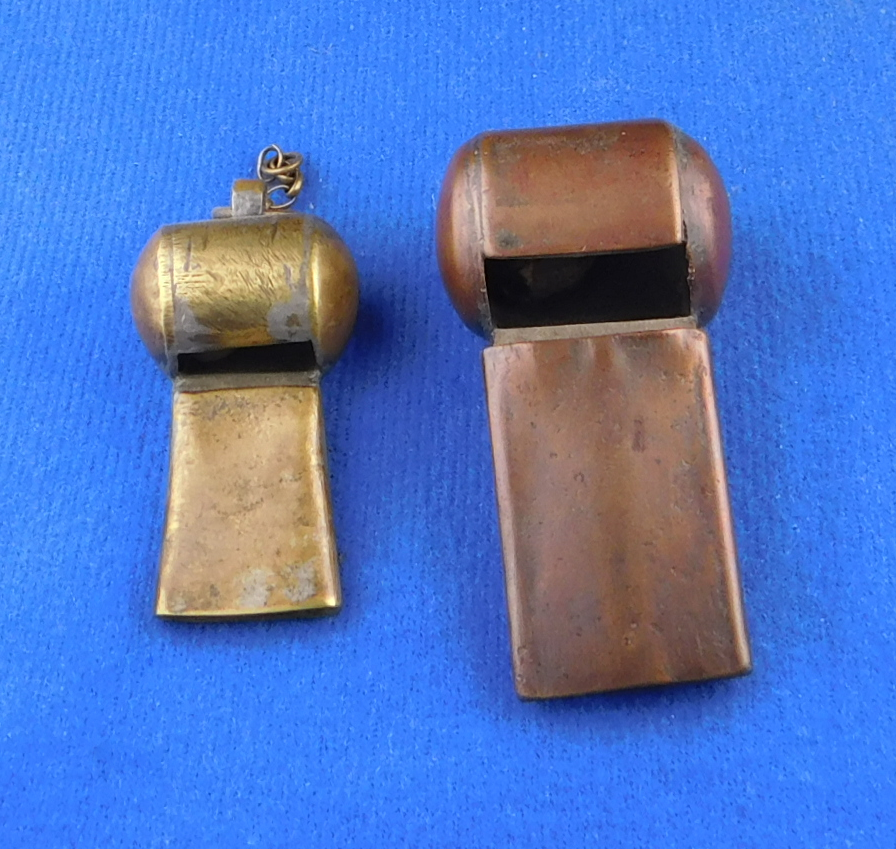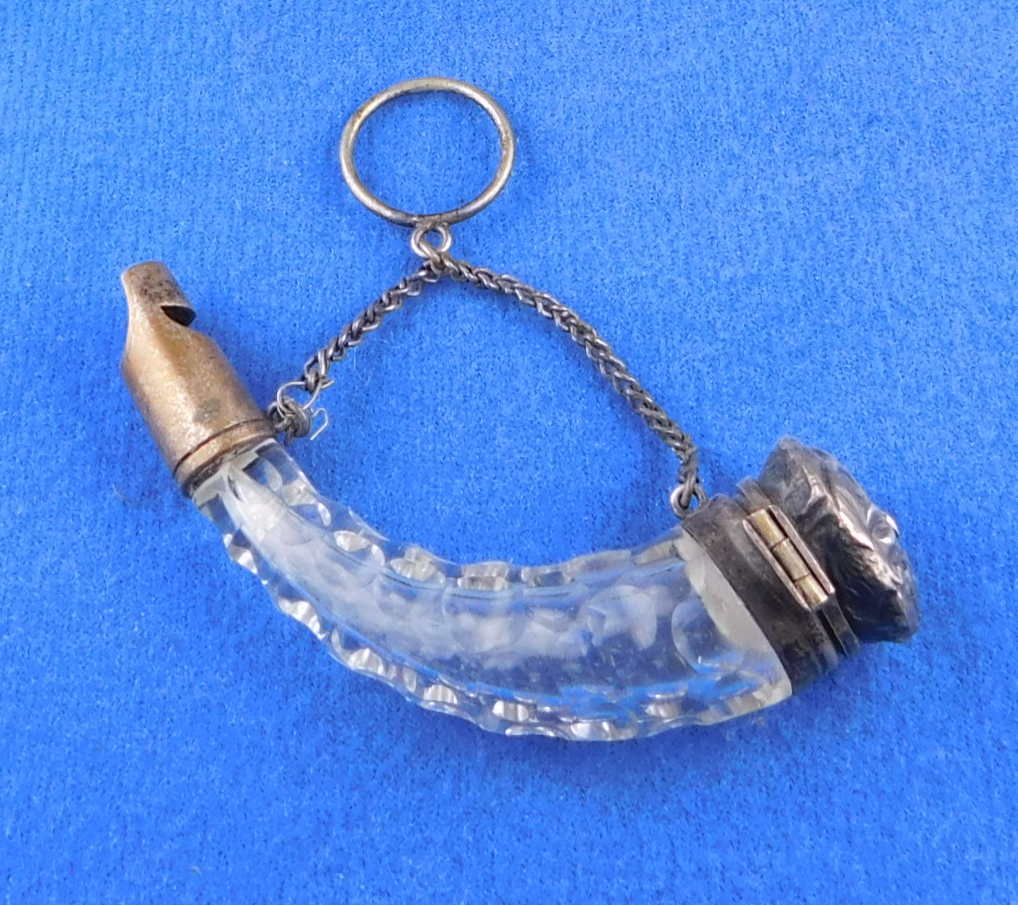Spotlight > Collectors > 115
Whistory
Martyn Gilchrist, simply described as ‘a crossword compiler and book indexer’ who lives in New Forest ( UK ) is the subject of this month’s SPOTLIGHT. He is also described as the foremost expert in the field of whistles.
Where would whistle collecting be without Martyn Gilchrist? Probably struggling along right between vintage nail clippers ( yes, they are collectible ) and rare cheese graters ( yes, I have seen a whole wall of them ). However, after he amassed over 5000 whistles, primarily metal, and then sold them off on eBay, whistles came into their own as a collectible, and Martyn Gilchrist became synonymous.
Admittedly, there have been some important tremors along the way — i.e. collectors interchange has grown, the booklets Whistle Notes, Dundas book Collecting Whistles, social media, auction houses and the like. But not until Martyn coupled his sell-off with three books and one of them scholarly, did ‘whistology’ really blossom. Whistles (2000) seemed to test the waters, Collecting Police Whistles and Similar Types ( 1998 ) really set the bar and More Whistles ( 2005 ) filled in the missing pieces.
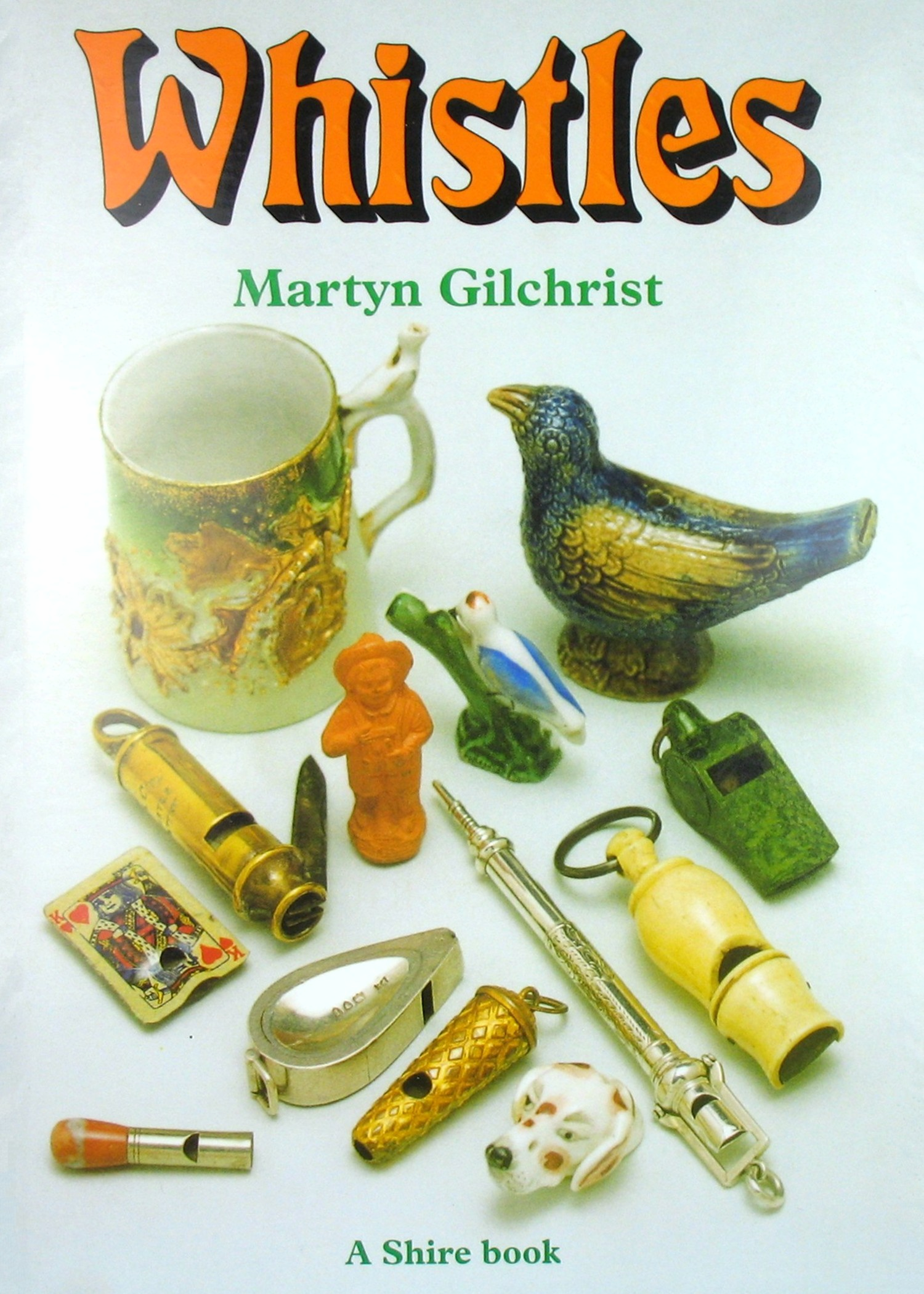
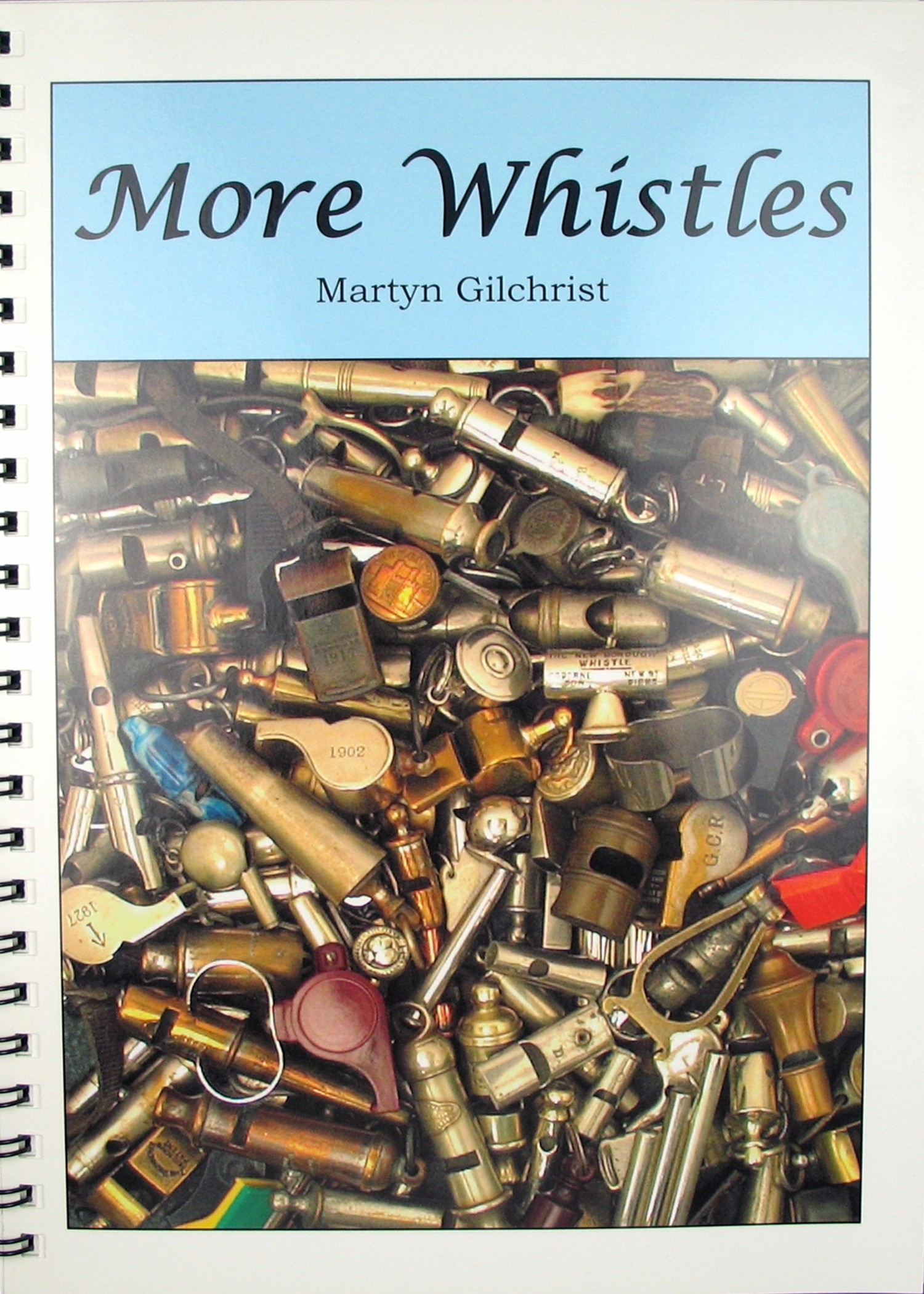
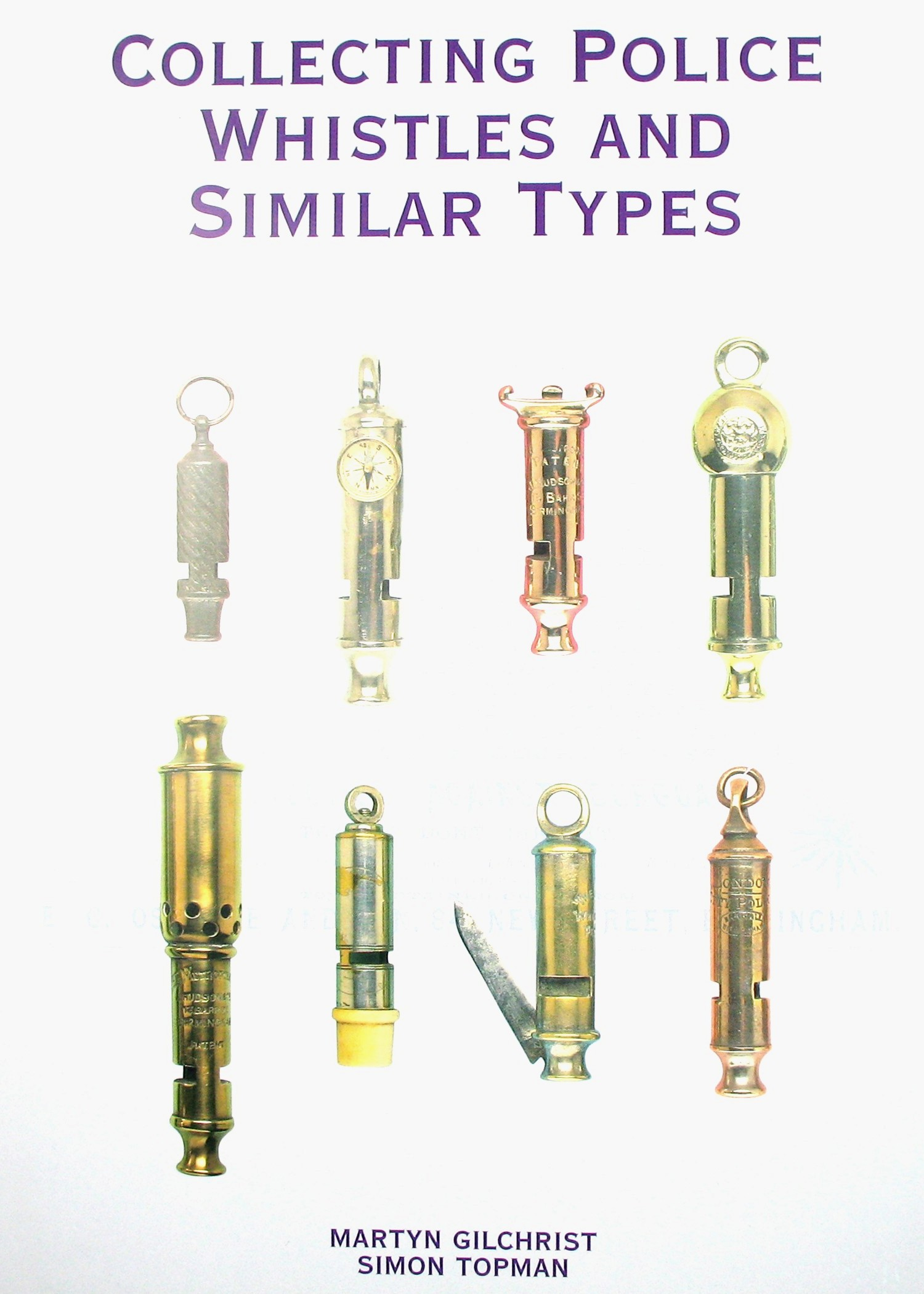
Now combine the two actions of the great sell-off and the onset of ‘the books’ and the groundwork was established for a remarkably neglected field to come into the limelight. So much so, that for the most part whistle collecting has emanated and radiated around the UK like spokes on a wheel. Many of the big names referred to among high level collectors such as Hudson, DeCourcy, Yates and others are all from the UK, as if there were no other whistle makers. Indeed, this has stimulated the realization that whistles are international, and this same research style is now extending into other countries, where big names such as Martin Signal, F.L Johnson, BGI, Carlos Rassetti and others are joining the ranks… But Martyn set the bar.
In just the past twenty years, vintage whistles, beginning at very modest prices, have skyrocketed upwards of 1500 to 2000 dollars for very rare ones such as a mono-typical Hudson duplex whistle, or a Hiatt’s asylum whistle. As of this writing a simple Metropolitan truancy whistle sold for the sum of 640 US dollars ( 500GBP). Not that money is the judge, but certainly it serves as a reflection. There are whistles such as corkscrew combinations, vestas, boatswain, gold/silver that continue to fall into crossover collectors fields and corral prices that have on occasion in the past, exceeded the price strata even now seen paid for rare whistles themselves.
It appears that by the time CPWs (1998 ) was written, a partnership had developed with Simon Topman, managing Director of Hudson & Co Ltd ( whistles ) and was the driving force located within this historic establishment, who helped accelerate research for CPWs. Martyn Gilchrist and Simon Topman as stated in that forward to CPWs, had been collaborating for 15 years. That would put the onset for this growth period circa 1983. Complex studies for identifying and dating whistles have been established because of Martyn and Simon’s research by digging deep into the extensive records that were a boon to whistle history. However it was Martyn Gilchrist who went on to write More Whistles, thereby establishing himself as the ‘go to’ person ( although Simon Topman is also the ‘go to’ guy in his own right ).
The growing number of serious students, the mega collections that have been and are being amassed plus the proliferation of whistle data, reveal more than just a passing hobby or a few zealots, as reflected in the growing social media communications — posted almost daily. Many ‘newbies’ are entering the field each month.
To what are we drawing attention to then? It is time to draw attention to and acknowledge the accomplishments and contributions that Martyn Gilchrist has made to whistle study and collecting. Additionally, in this process touch on how it happened and inevitably where it is going today.
Years ago when we started researching whistles the ship had already left port. The sell-off of Martyn’s collection was already well under way. This was circa 2005, a mere 15 years ago, feeling more like half a century.
The first book we obtained was the small booklet type ( Whistles ) and unknowingly at the time was printed after CPWs. It was studied relentlessly. Mysteries were unlocked and at the same time there arose so many more questions. Since we were ‘late to class’, it was hard to catch up. That is where CPWs served almost like a condensed encyclopedia set. Then, it seemed forever waiting for More Whistles that would lay out escargots, sirens, beauforts and round whistles. Occasionally we would write to Martyn when he was not as reclusive, and every response was like gold to read and re-read. His replies were usually short and pithy, but always to the point and instructive.
Cross referencing with other collectors was a rush and accelerated learning, but Martyn’s word was always the touchstone. For many it remains the same today. Although advances have inevitably been made, his structural research has remarkably endured.
“His desire to know more ( about whistles ) led to a programme of original research covering Britain’s major collections and institutions” states the back cover of More Whistles. The book CPWs states in the Forward: “The book is the first authoritative account of whistles and whistle collecting of its type”.
Whistology
What are some of the standards that he pioneered while writing the books ?? While research methods are nothing new, the application to whistle research was novel, ‘original’ in many respects. We wish to examine:
1) Verification of data records
2) Components – parts names and internal makeup
3) Catalogs and ads
4) Records — appendix stamps
5) names of whistle types
6) Patents
7) Registrations
8) Sizes
9) pictures & notes
10) Hudson records
11) Sketches
12) Chains
13) Company back grounds and research from city records.
14) Described categories ( excludes corkscrews, boatswains, vestas etc. )
(1) Martyn was uncompromising in verifying what he wrote. “I do not guess” he once wrote. “I may say possibly or probably” and with that, his books took on the authoritative level they sustain today. If further data is unearthed, it is compared to what he had found so as to modify it to current status.
Why is this so important? While using ‘hunches’ may work well for whistle archeology, it is destructive to solid repeatable data. Especially with the advent of social media like Wikipedia, eBay, Etsy, ‘ forums’ and the like, where unsteady conjectures can be repeated ad infinitum until it is referred to as bona fide researched data.
Martyn went to great lengths to unearth records, visit collections, track down catalogs, pour through Hudson records. He kept notes and all this before the internet really facilitated research.
(2) To really understand whistles, one needs to know the parts that make them up. To do so, inevitably they must be taken apart. Additionally, to communicate well with others, names need to be established and accepted. Although there may have been whistle language in use, Martyn published and solidified names that were in existence or needed to be added to. For example, on page one of Whistles a round whistle is diagramed and again on page one of CPWs he diagrams an exploded view along with names of the parts making up a general service whistle. This is repeated in MWs on page 5 for escargot whistles.
(3) Not unlike other collectors of vintage items, Martyn realized that catalogs were of especially high value for identifying whistles, models and makers. At the same time, he dug into collectors’ records and libraries for advertisements collating this data and using it in his publications with appropriate references.
(4) He built appendix tables and lists for reference. For example, in CPWs in the back he listed all the body stamps by manufacturers that he could find at the time – 30 pages. One notes that the references in the back of CPWs becomes indispensable for verification and research, where ever new information can be noted.
(5) Martyn named whistles. Escargot, beaufort, GSW, police, button and the like were either named personally by him or at least became established with his putting them in an accepted printed form. This would prove indispensable for collectors old and new to communicate well about their research.
(6) Patent research is an arduous task. Some research is available online these days. However, prior to this, painstaking trips to city records around the UK had to be made, dug into, and recorded. Patents like catalogs confirmed and verified the manufacturers, employees, addresses and pedigree of known and unidentified whistles. Patent research as whistle archeology, is especially important to dating whistles and Martyn realizing this importance recording this on pages 110 & 111 of CPWs.
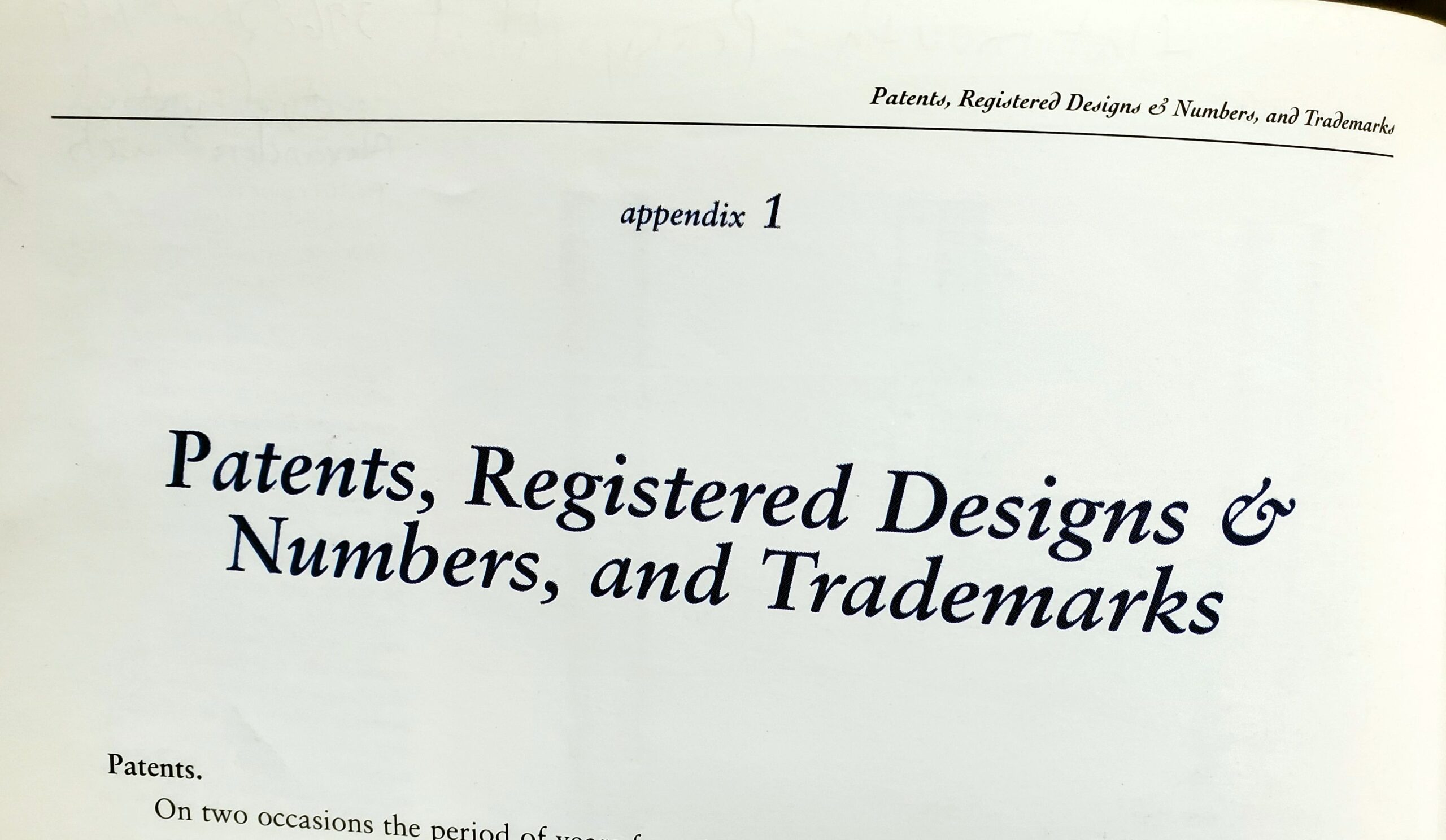
(7) Again, here the import of registration was collated, explained, and listed on page 111 of CPWs for reference and verified from extant records.
(8) Size becomes important in relationship to models and especially with the advent of eBay and other auction houses where photographs are used to sell whistles that can range in size. In CPWs the actual sizes are pictured where possible and the lengths/widths are accurately described. Although in MWs this is not followed, the sizes are painstakingly listed next to the pictures.
(9) Pictures were used prodigiously to help identify whistles. These pictures accompanied by descriptive notes, become invaluable for study. Indeed, one needs to pour over these ‘side notes’ carefully and repeatedly so as not to overlook cross refences and subtle bits of important data.
(10) How many hours of research did Martyn do at Hudson’s Co. ? Because of Hudson’s unique history with whistles, the crossroads of whistle history there is vast. In fact, to this day records are being unearthed, researched and collated. This was a gargantuan task. Much of the whistle stamp records were ‘built’ from there.
(11) Martyn collaborated to install detailed sketches in CPWs pages 88 through 99 (11 pages ) and taught us all just how important it is to look beyond the exterior of a whistle and to search inside so as to accurately identify a whistle manufacturer.
(12) Even chains are catalogued on page 113 of CPWs, which surprisingly helps in identification and other maker idiosyncrasies.
(13) Throughout his publications Martyn endeavors to reveal the background of the manufacturers and their relationship to each other. This includes the geographical locations, their dates of manufacturing and even relationships within. As we unearth more data today, this can be modified or be added to more effectively.
(14) In this process, the difficult task arises as to how many categories there are of whistles. With innovations all along the way, this organizing, after the most obvious categories, becomes more tedious. Some whistles fall into obvious categories. For example, button whistles are made from buttons, but what about coins? Escargots make up a category, but do buttons fall into them? These and others become less and less obvious, but Martyn struggles to group whistles as best one can first off and then lists others around these parameters.
Conclusions?
Perhaps much more can be said, and we may be able to add to this SPOTLIGHT. However, attention was calling out to especially highlight a pivotal person, who beyond his expertise– contributed his whistles, research and books to whistle history.
As a collectible, whistles have begun to excel, not just in prices, but research, cataloguing, pedigree, variety, and our knowledge is to a great extent built on the solid foundation established by Martyn Gilchrist.
It is hoped that others will follow his footsteps and although social media has proven to be helpful, it has not arisen to the level that Martyn set of verifiable researchable data.
Others in time may become important contributors, history will tell.
Thank you, Martyn
TWG
Posted October 5, 2020
